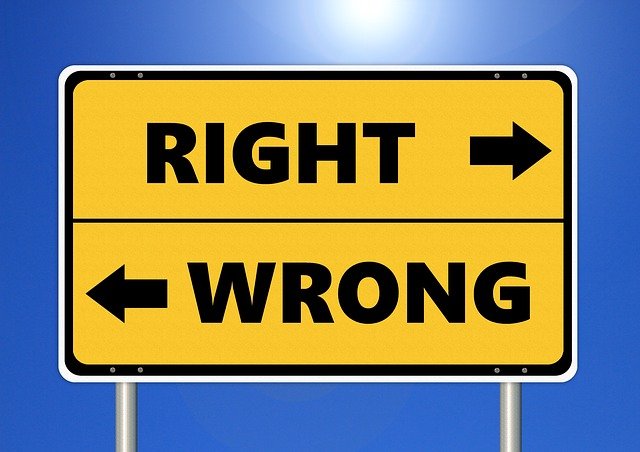9 Professional Ethics
The Ethical Dilemma
Present day public relations does not have a strongly ethical image in the public, and particularly in media representations. The struggle to establish an identity as an ethical profession has been a challenging one (Thurlow, 2009). As Edgett articulates, public relations “has much still to prove as it strains toward recognition as a true profession” (Edgett, 2002, p. 2). Research has suggested that this may result from negative portrayals in popular culture (Johansen, 2001) or from a less than honorable past, epitomized in the work of early PR practitioner and circus promoter P.T. Barnum. Barnum is famous for asserting that there is no such thing as ‘bad publicity’, and ‘I don’t care what they write about me in the press, just spell my name right’ (Heath & Coombs, 2006). Other research speculates on lack of understanding of the profession out in the public, or animosity from journalists who are frustrated by lack of access to information and lower wages (Miller Russell & Bishop, 2009).

Although current depictions of PR practitioners as ‘spin doctors’ are commonplace, this perception was not always the case. In both Canada and the United States, it has been suggested that the practice was originally seen as a positive role in society, or at the very least, neutral (Miller Russell & Bishop, 2009; Johansen, 2001). In a Canadian context, media depictions of PR agents as unethical were not present in the media for the most part until the mid-1940s (Johansen, 2001). Prior to that, and reaching back to the mid-1800s, public relations was largely seen as government communication or advertising, and there does not appear to be a strong feeling about the ethical practice of either of these functions in the press (Emmis,1995; Thurlow, 2014).
Miller Russell and Bishop (2009) identify the mid to late 1890s as the turning point in media references to PR practice in the United States. Prior to the 1890s, PR practitioners had been seen largely as spokespersons providing access for journalists to entertainment events or provide information from corporate sources. There were also calls for more transparency from the corporate sector, including demands for access to corporate leaders and written material explaining corporate positions.
However, by the mid to late 1890s, references to press-agentry (as a form of public relations) were becoming decidedly more negative. The motivations behind this change appear to emerge from conflict between journalists and press agents around access to information from corporations and a lack of authenticity in the publicity events created to sell tickets or products (Miller Russell & Bishop, 2009). By the time Ivy Lee produced his Declaration of Principles in 1905, American had gone through an intense period of corporate mergers and the formation of corporate trusts. From 1895 to 1904, over 3000 companies had disappeared as a result of corporate mergers (Olasky, 1987). Investigative journalism was emerging at this time to uncover corruption in government and corporate America. The leading industrialists of the time, including Ivy Lee’s future employer, John D. Rockefeller, had expanded their corporate empires by merging corporate interests with little regard for the needs of the working class. As Olasky (1987) points out, Lee was a top economics student at Princeton University during the trust-building era, and his political and economic views very much supported this movement.
References
Edgett, R. (2002). Toward an ethical framework for advocacy in public relations. Journal of Public Relations Research, 14(1), 1-26.
Emmis, M. (1995). The Origins of Public Relations as an Occupation in Canada. MA Thesis, Concordia University.
Heath, R. L., & Coombs, W. T. (2006). Today’s Public Relations: An introduction. Thousand Oaks, CA: Sage.
Johansen, P. (2001). Professionalisation, building respectability, and the birth of the Canadian Public Relations Society. Journalism Studies, 2(1), 50-62.
Miller Russell, K., & Bishop, C. (2009). Understanding Ivy Lee’s declaration of principles: W.S. newspaper and magazine coverage of publicity and press agentry, 1865-1904. Public Relations Review, 35(2), 91-101.
Olasky, M. N. (1987). Ivy Lee: Minimizing Competition through public relations. Public Relations Quarterly, 32(3), 9.
Thurlow, A. (2009). I just say I’m in advertising: A public relations identity crisis. Canadian Journal of Communication, 34(2), 245.
Thurlow, A. (2014). Rethinking an Ahistorical Symmetry: A critical historiography of Public Relations in Canada. In P. Genoe McLaren, A. J. Mills & T. G. Weatherbee (Eds.), Routledge Companion to Management & Organizational History. London: Routledge
Someone who misrepresents a news event or individual to create a more favorable image.
The practice of attracting the attention of the press through techniques that manufacture news. Methods associated with press agentry include staged events, publicity stunts, faux rallies or gatherings, spinning, and hype.

